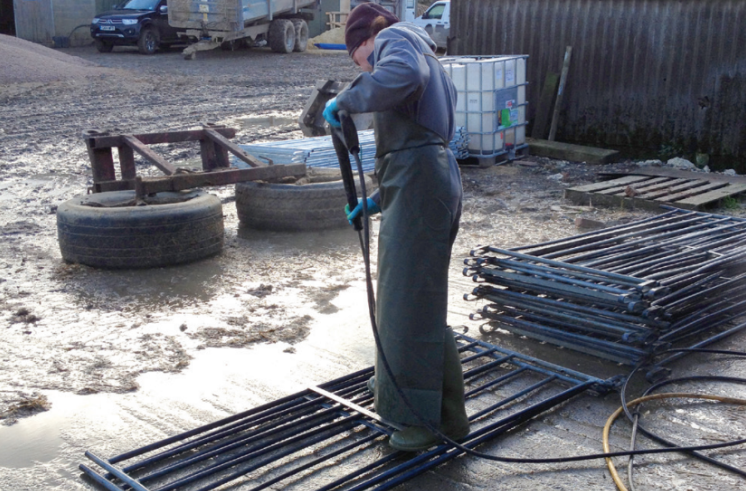In the final instalment of the AgriLand and Volac – ‘Calf Health Series’ – we will discuss how scour can affect young calves, while outlining the measures that can be put in place to avoid the disease.
As with any disease on-farm, prevention is better than cure, and farmers must limit calves’ exposure to disease – which can, if not properly managed, have a drastic effect on the performance of an animal.
Calf scour caused by Rotavirus (rota) and Cryptosporidum (crypto) typically occurs from five-to-14 days-of-age. Scour in calves less than a month-of-age is also, but less commonly, caused bq E.coli, Salmonella and Coronavirus.
Scour, as a result of Coccidia, is typically seen in calves greater than three weeks-of-age. These calves pick up pathogens (organisms that cause disease) by ingesting manure from other infected calves or cows.
The calves will find contaminated manure in the environment on the ground, on the walls, on the bars of gates and on feeding equipment; scour can spread easily from calf-to-calf.
- Reduced growth rates;
- Treatment costs;
- Increased labour;
- Lead to other diseases such as pneumonia;
- Can result in mortality.
Preventing scour outbreaks depends on managing the balance between the level of infection the new-born calf is exposed, and the level of resistance to infection within the calf through colostrum intake and vaccination.
Disinfection of the calf environment and good hygiene that prevents contact between the calf and manure, and feeding high volumes of clean, antibody-rich, colostrum immediately to the new-born calf, are the basics to stopping scour outbreaks.
In terms of treatment, this is based on the principles of replacing the fluid the calf loses, correcting the altered blood acid balance that weakens the calf and feeding the calf milk to maintain its immune system. Therefore, electrolytes can be fed to rehydrate the calf.
A scouring calf will need a minimum of 4L extra fluid of the correct glucose, salt and bicarbonate concentration, as well as milk to appetite. Antibiotics are used only as directed by your veterinary surgeon.
When it comes to reducing the risk of scour, feed enough clean, quality colostrum quickly to the new-born calf. Furthermore, cows can be vaccinated pre-calving to increase antibodies to E. coli, Rotavirus and Coronavirus in the colostrum.
Farmers should continue to feed clean colostrum or transition milk for as many feeds as possible, depending on the herd’s Johne’s Disease status.
Transition milk contains antibodies and growth factors that act in the calf’s gut to reduce the risk of rota and Coronavirus from binding to the gut wall and causing disease.
Volac ASGOLD is a dietetic complementary feed for the stabilisation of water and electrolyte balance.
It may be used in case of risk of, or recovery from digestive disturbance (diarrhoea) and can be fed in conjunction with the normal milk diet; it is also an ideal first feed for bought in calves.
It contains a unique blend of electrolytes, glucose, natural plant fibres and pectins. Volac ASGold is a light brown, easy to handle, dry powder, containing a unique blend of electrolytes, glucose, natural plant fibres and pectins.
- Re-energies;
- Rehydrates;
- Revitalises.
Between each batch of calves, farmers should thoroughly clean and disinfect with an appropriate product effective against crypto and surfaces on which calves might lick or chew; allow these surfaces to dry thoroughly after disinfection.
Finally, every effort should be made to prevent cold stress in calves under three weeks-of-age by providing deep, warm bedding and good nutrition.
Part 1: Calf Health Series: The power of colostrum must not be underestimated
Part 2: Calf Health Series: What should I feed, and how much, for optimum condition?
Part 3: Calf Health Series: Which feeding system is best suited to your farm?
Part 4: Calf Health Series: Hygiene and biosecurity must not be overlooked in the calf house
Part 5: How to provide the perfect environment for calves
Part 6: Calf Health Series: Why feed conversion efficiency is highest during the pre-weaning period
Part 7: Calf Health Series: Maximising and monitoring performance through to weaning
More information
Volac has been involved in young animal nutrition for the past 40 years and is an innovator in this field.
The company is committed to helping farmers make the most of their calves and has developed a range of specialised milk replacers, which are specifically formulated for modern dairy and beef animals.
For more information, contact a Volac representative today, or visit the Volac website by clicking here



